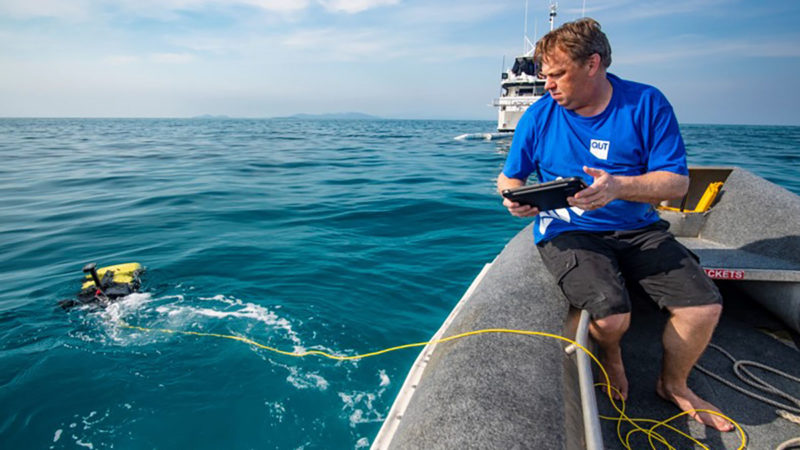Stewards of the Great Barrier Reef are working toward greater resilience to climate events with help from some ground-breaking technology: and an underwater robot is delivering corals
Ecology and technology have joined forces to give nature a helping hand by using an underwater robot to deliver heat-tolerant coral larvae directly to the Great Barrier Reef. This is the first small-scale pilot of a new technique that researchers hope will help restore and recover coral reefs.
In a first for the world, an underwater robot has helped scientists repopulate parts of the Great Barrier Reef by dispersing microscopic baby corals (coral larvae) during this year's mass coral spawning event.
Underwater robot transplants baby corals
Southern Cross University's professor Peter Harrison and Queensland University of Technology (QUT)'s professor Matthew Dunbabin trialed the initiative on Vlasoff Reef, near Cairns in north Queensland, after winning a $300,000 grant from the Great Barrier Reef Foundation (GBRF).
Professor Dunbabin engineered QUT's RangerBot (previously used to hunt out and kill crown-of-thorns starfish, into LarvalBot specifically for Harrison's coral-restoration project.

Dunbabin programs the LarvalBot (Photo credit: Gary Cranitch)
The project builds on Harrison's successful larval-reseeding technique piloted on the Southern Great Barrier Reef in 2016 and 2017, which in turn followed small-scale trials in the Philippines.
"This year represents a big step up for our larval-restoration research," says Harrison. "It's the first time we've been able to capture coral spawn on a bigger scale using large, floating spawn catchers, then rearing them into tiny coral larvae in our specially constructed larval pools and settling them on damaged reef areas.
With further research and refinement, this technique has enormous potential to operate across large areas of reef and multiple sites in a way that hasn't previously been possible," he adds.
"We'll be closely monitoring the progress of settled baby corals over coming months and working to refine both the technology and the technique to scale up further in 2019."
How does it work?
Setting out larval pool floats (Photo credit: Biopixel)
With a current capacity to carry around 100,000 coral larvae per mission and plans to scale up to millions of larvae, the robot gently releases the larvae onto damaged reef areas allowing it to settle and, over time, develop into coral polyps or baby corals.
"During this year's trial, the robot was tethered so we could monitor it precisely, but future missions will see it operate alone and on a much larger scale," says Dunbabin.
"Using an iPad to program the mission, a signal is sent to deliver the larvae and it is gently pushed out by LarvalBot. It's like spreading fertilizer on your lawn.
The robot is very smart. It glides along and we target where the larvae need to be distributed so new colonies can form and new coral communities can develop."
The project's future
This project builds on work by Dunbabin, who developed RangerBot to help control the coral-killing crown-of-thorns starfish that is responsible for 40 percent of the reef's decline in coral cover.
"It's exciting to see this project progress from concept to implementation in a matter of weeks, not years," says Great Barrier Reef Foundation managing director Anna Marsden. "The recent IPCC report highlights that we have a very short window in which to act for the long-term future of the reef, underscoring the importance of seeking every opportunity to give our reefs a fighting chance."
Following the success of this trial run in 2018, the researchers plan to fully implement their challenge-winning proposal in 2019.They will build even larger spawn-catchers and solar-powered floating larval incubation pools and design them to rear hundreds of millions of genetically diverse, heat-tolerant coral larvae to be settled on damaged reefs through a combination of larval clouds and LarvalBots.
The post Underwater Robot Delivers Baby Corals to the Great Barrier Reef appeared first on Scuba Diver Life.
from Scuba Diver Life https://ift.tt/2Te9NpT
No comments:
Post a Comment